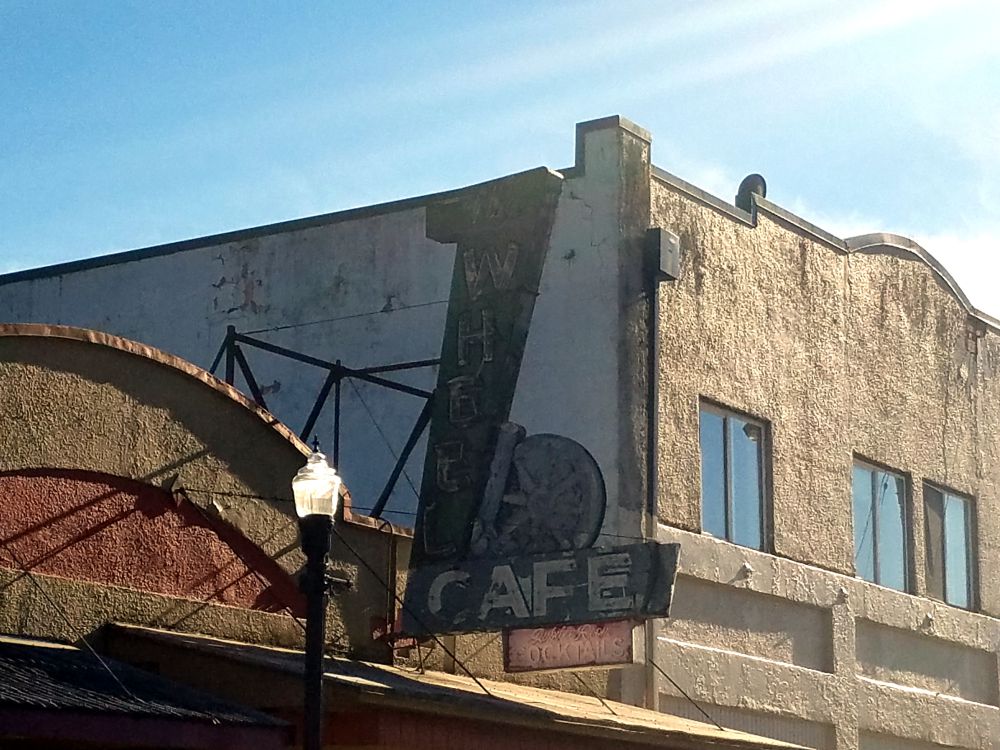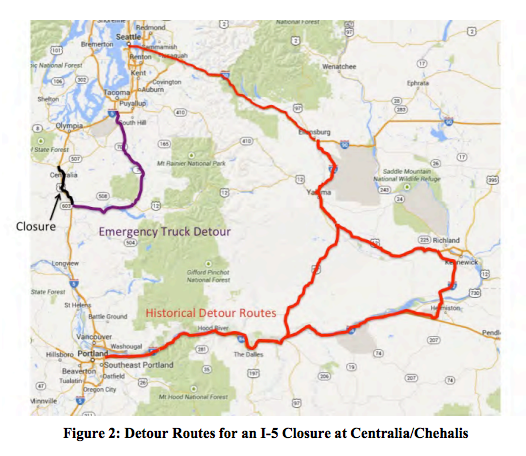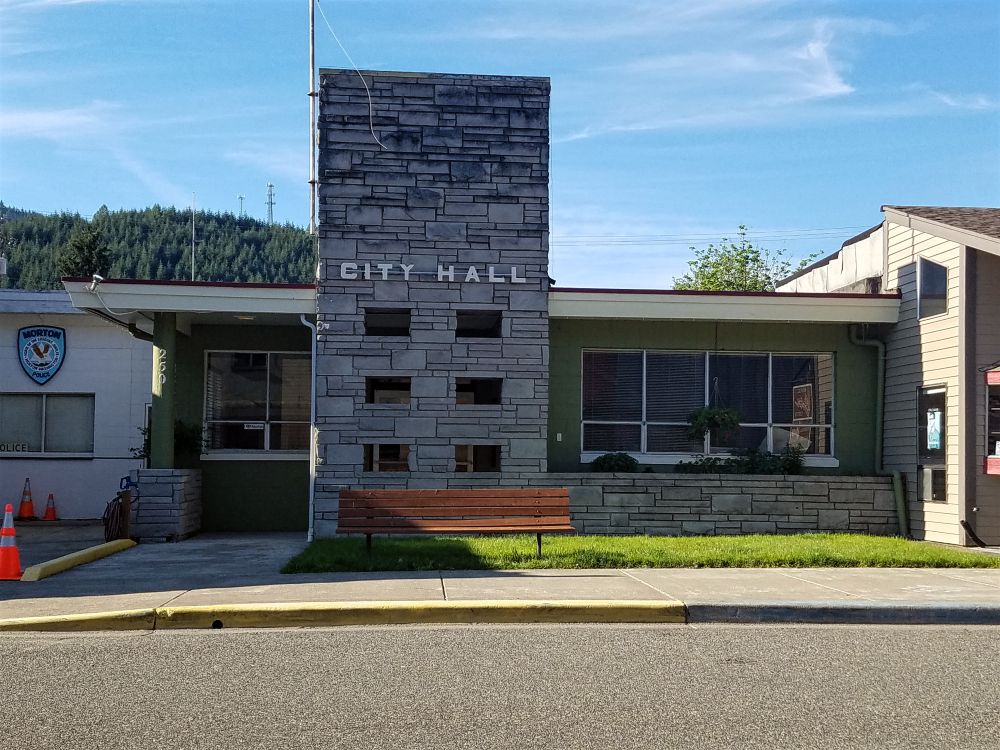Connecting state and local government leaders
Mountainous, forested topography can squeeze—or cut off—the Pacific Northwest’s key transportation routes at the worst times. What happens when the Big One hits?
“The Geography of Disaster Risk and Resiliency in America” is an ongoing series of Route Fifty dispatches that's part of a larger forthcoming ebook providing snapshots of the very real dangers and disruptions that emergency planners, first responders, public officials and other stakeholders face, plus the strategies and technologies helping our communities be more resilient. | Previously: Seattle
MORTON, Wash. — When looking at transportation resiliency in Western Washington state, this small city, with about 1,100 residents, is a good place to better appreciate the geographic limitations state and local emergency managers have to deal with regarding the region’s roads and highways.
Simply put, venturing out from the population centers in the lowlands of Puget Sound, like Seattle and Tacoma, there are few options when trying to go from Point A to Point B and those options probably involve Interstate 5.
Morton, which like many of the cities and towns in Lewis County grew up around logging, sits about 54 miles west of White Pass, which carries U.S. Highway 12 over the Cascade Range to Yakima. The city is about 32 miles east of I-5 and roughly 60 miles south of Tacoma along State Route 7.
As the highway backbone for entire West Coast, I-5 is a critical north-south lifeline in the region. But the magnitude 9.0 Cascadia earthquake scenario—the Pacific Northwest's future Big One—demonstrates how vulnerable that lifeline is, too.
It doesn’t even take a major earthquake to create a regional disruption.
In December 2007, significant rainfall and melting snow from the mountains caused the Chehalis River to overflow its banks, which not only inundated low-lying areas in and around cities like Chehalis and Centralia, but also forced the closure of an approximately 20-mile stretch of I-5 for four days. In January 2009, flooding blocked I-5 in the same area for two days.
Where does Morton fit into this emergency management story? The city sits at the junction of U.S. Highway 12, which runs east-west and State Route 7, a two-lane road that runs north toward Tacoma, and connects with one of the entrances to Mount Rainier National Park.

If Interstate 5 is out of commission in Chehalis, there aren’t any other road connections in the immediate vicinity that allow you to bypass the local closure. From Morton, there aren’t any roads that run south toward the Columbia River and Oregon—Mount St. Helens, the famous volcano that erupted in 1980, is about 22 miles to the south.
That means for north-south travel, Morton is the only way get through Western Washington without going out to the Pacific Coast via U.S. Highway 101 or going east of the Cascades via Snoqualmie Pass.
During those flooding events on the Chehalis River, traffic between the Portland and Seattle areas was detoured to go east of the Cascades via Interstates 90, 82 and 84, a 254-mile detour, or 134 miles with a cut-off via U.S. Highway 97, which crosses Satus Pass, in addition to Snoqualmie Pass, both of which are approximately 3,100 feet above sea level.
Now, add trucks into the equation here—you know, the kind that carry food, goods and supplies in and out of the greater Seattle area.
Detoured truck and car traffic going in and out of the Seattle-Tacoma area simply can’t all squeeze through Morton and the long detours east of the mountains aren’t ideal, either.
The Washington State Department of Transportation knows this, so the Morton route to bypass Chehalis is reserved as an “Emergency Truck Detour” where “priority truck shipments” are allowed through at staffed checkpoints.
According to a September 2014 WSDOT research report into the travel costs associated with Chehalis River flooding, the agency “is charged with determining how to define a priority truck movement, but the intent is to make sure emergency and time-critical medical supplies and material needed for emergency repairs have access to this route.”

Even with the emergency truck detour, the route through Morton isn’t a quick bypass, even if it’s the shortest way around the chokepoint in Chehalis.
The WSDOT report continues:
If the trip can be made at the speed limit, the detour requires roughly 115 minutes, 55 more minutes than a car making the I-5 trip. However, because of the combination of weather, local car traffic, and truck use of roads with insufficient roadway geometry, this route is not expected to operate at the speed limit for much of the day. Instead, it is expected to operate as if it were heavily congested for much of each day. When congested, I-5 requires twice the normal time to traverse this corridor. Thus, the assumed trip time for most trucks using this detour is twice the free flow travel time, or 230 minutes (just under 4 hours). Of all trucks using this detour, it is assumed that 80 percent will operate at these lower speeds, And 20 percent will travel at the speed limit.
Now envision that line of trucks carrying emergency supplies on constrained roads in a different context: A future Cascadia megathrust earthquake.
For starters, places like Morton—off Interstate 5 and with limited road connections to it, could very likely be cut off for awhile. On my trip into Morton, driving south on S.R. 7 through the very hilly and scenic terrain, it’s easy to envision landslides and road damage making routes like this impassable during a major earthquake.

This past winter, a landslide temporarily closed S.R. 7 north of Morton. And under most Mount Rainier eruption scenarios, this route passes through areas vulnerable to lahar flows.
So you get the picture here: The mountainous, forested topography can squeeze—or cut off—the Pacific Northwest’s transportation lifelines at the worst times, whether it’s for avalanche dangers crossing over Snoqualmie Pass, flooding along the Chehalis River, an earthquake that brings mass regional disruptions or a volcanic lahar that can bury river valleys and lowlands in mud, rock and debris.
In June 2016, multi-jurisdictional stakeholders and first responder agencies across the Pacific Northwest participated in region’s largest disaster drill, “Cascadia Rising,” a megaquake scenario organized by the Federal Emergency Management Agency. There were approximately 20,000 emergency managers and other personnel involved in Oregon, Washington state and Idaho, where state and local officials will have to manage an outflow of people heading inland to seek refuge.
In Cascadia Rising’s magnitude 9.0 earthquake scenario, beyond the estimated 14,000 people killed and 30,000 injured in Oregon and Washington state, more than 7,000 highway bridges and 16,000 miles of roadways across the region sustained moderate or severe damage.
Rebuilding those bridges, highways and roads, not surprisingly, will be critically important in the region’s long-term recovery.
But in the short term, there will be extremely challenging conditions for the immediate response to a regional megaquake.
As The Seattle Times reported in October, a review of the Cascadia Rising exercise showed that one of the sources of tensions for emergency managers was a landslide along Interstate 90 that took three days to clear, something that was deemed “unacceptable.” According to one evaluator of the exercise, the Times reported, the response environment was “poisonous,” as transportation officials complained that emergency management officials hadn’t prioritized routes for clearing. Overall, public officials described the state’s response as “grossly inadequate.”
In such a disaster scenario, officials are now warning that a potential “humanitarian crisis” could unfold in 10 days and now recommend that residents across the region stockpile water and provisions for up to two weeks.
Reopening routes across the mountains and elsewhere along the I-5 corridor—including I-5 itself—will be critical to Western Washington’s long-term recovery, especially as port facilities in Seattle and Tacoma are repaired and come back online.
Until that happens, authorities will have to prioritize what goods, resources and people can travel along the limited routes available.
The main takeaway: Washington state isn’t very resilient and there’s a lot of difficult work ahead to reach a better level of preparedness. But the exercise has brought “momentum” around resiliency, Maj. Gen. Bret Daugherty, director of the Washington Military Department and commander of the Washington National Guard, said in a statement on Wednesday, the one-year anniversary of Cascadia Rising.
"As a result of the exercise, our governor directed the formation of a Resilient Washington sub-cabinet, a multi-agency workgroup charged with improving our state's resiliency. Cascadia Rising also guided our decision to change our recommendation on preparedness, so we're now telling people to have enough emergency supplies to stay on their own for up to two weeks."
By then, supply routes over the mountains will—fingers crossed—be cleared, re-established and able to aid the difficult post-quake recovery.
Michael Grss is Executive Editor of Government Executive's Route Fifty and is based in Seattle.

NEXT STORY: Congressional Appropriators Show Little Enthusiasm for Trump’s CDBG Cuts




